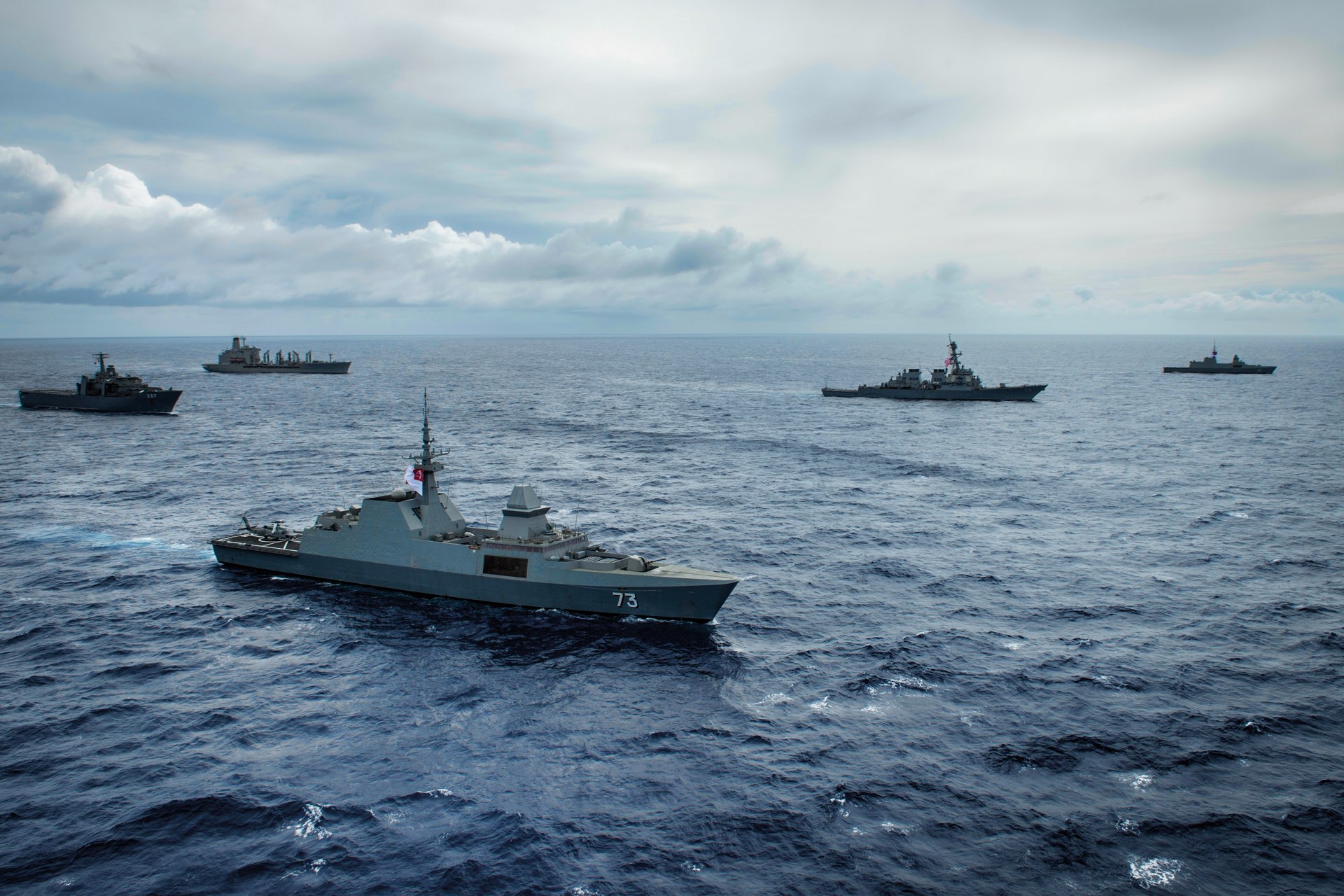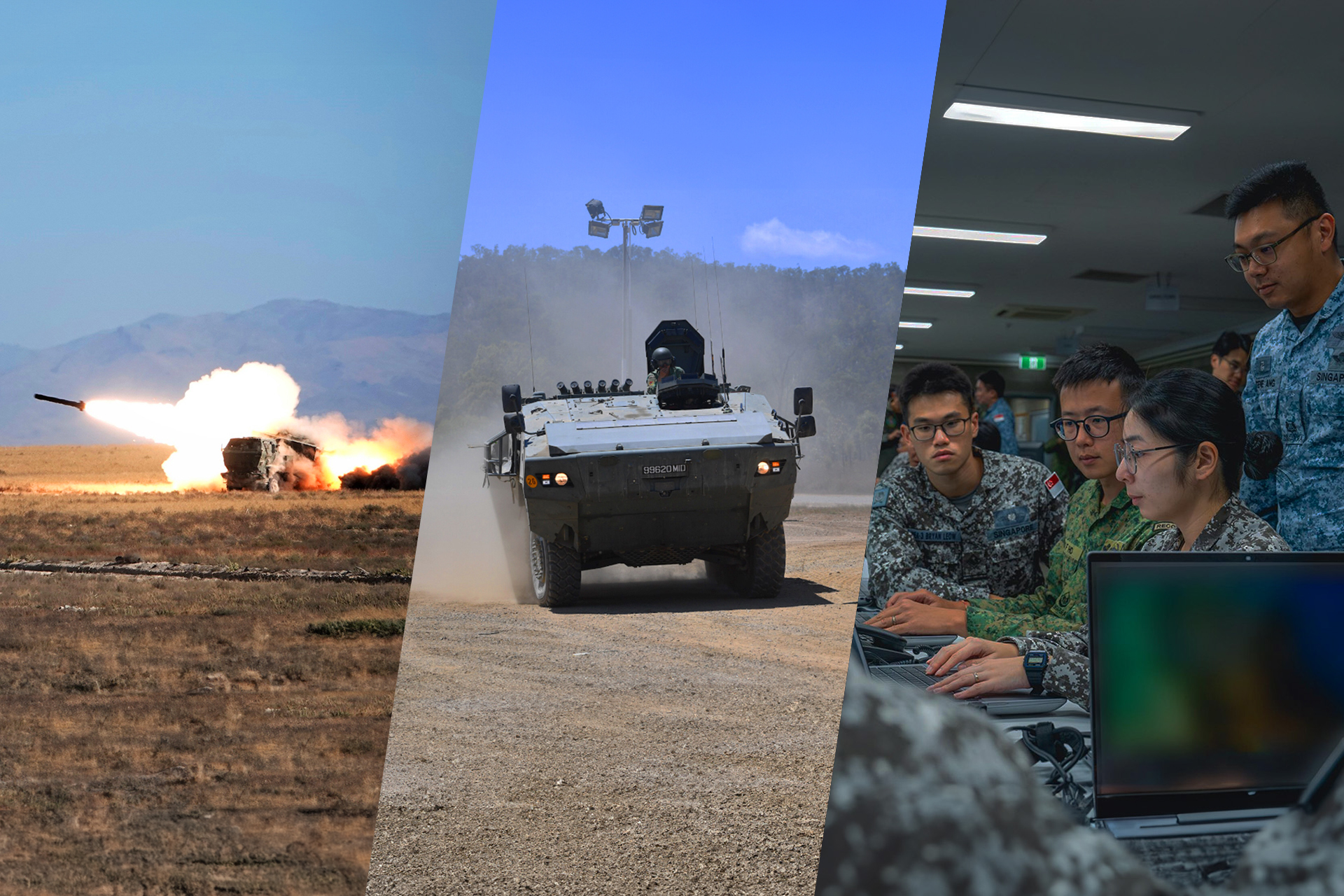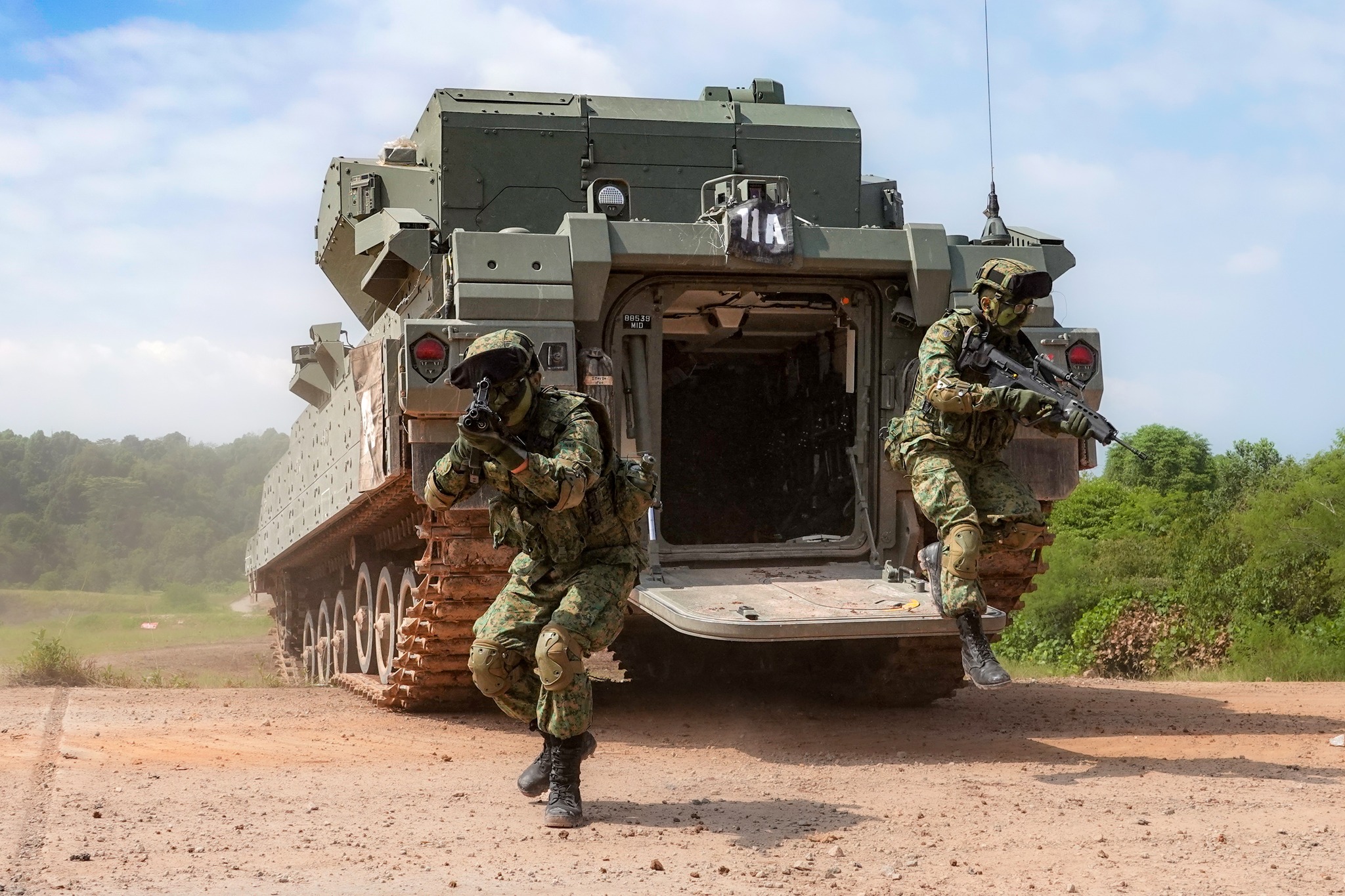HUNTER GAMES
Catch the action as the Republic of Singapore Navy (RSN) and United States (US) Navy spent two weeks in the waters off Guam for Exercise Pacific Griffin.// STORY Ong Hong Tat
// PHOTOS courtesy of The RSN and US Navy
Singapore warships recently ventured 5,000km away to Guam to conduct naval warfare drills with their counterparts from the US.
With the vast waters off the small Pacific island, the ships had all the space they needed to flex their sea legs. They were there from 19 Aug to 2 Sep, conducting anti-submarine, anti-air and anti-surface warfare drills together.
From the RSN were Landing Ship Tank RSS Endurance and two frigates - RSS Stalwart and RSS Supreme, with an embarked Sikorsky S-70B Naval Helicopter.
Assets from the US Navy included littoral combat ship USS Coronado, Arleigh Burkeclass destroyer USS Benfold, replenishment oiler USNS Pecos and military aircraft such as Hawker Hunter fighter jets.
"The training space here (in Guam) allows the RSN to conduct advanced, high-end naval warfare and maritime training of substantial scope and complexity," said Colonel (COL) Saw Shi Tat.
He is Commander, First Flotilla and Commanding Officer of 185 Squadron.
Hunting party
For the anti-submarine warfare scenario, the two navies had to operate their ships and aircraft in tandem while coordinating flight operations.
The faster and more mobile air assets functioned as forward eyes for the ships. The S-70B, for instance, combed the sea for potential threats lurking beneath the sea surface and investigated areas of interest with its dipping sonar.
Working in tandem, the USN's fixed wing P-8 Poseidon aircraft dropped sonar buoys. With their higher speed, they were able to cover longer distances.
Once a contact of interest was picked up, the more manoeuvrable S-70B helicopter would investigate further. During anti-submarine operations, the warships also deployed their sonar systems.
While aircraft like the S-70B were able to lower their sonar array from the air, warships towed their sonar behind. The sonar systems use both active and passive sonar technology.
The former works by emitting sound waves in an area of interest; the returning waves are then computer-analysed to "see" what lies beneath. In passive mode, the sonar "listens" for vessel noises.
Stretching capabilities
Said Tactical Aircraft Coordination Officer (TACCO) Captain Tan Hoong Teck: "The waters here are deep; submarines can use this to their advantage to evade detection.
"The bigger training area also means both aircraft and submarines have a lot of room to manoeuvre; and we are able to push our operational limits to see how effective we are."
The 29-year-old sat in the S-70B, coordinating the operations between the ship and aircraft. As trained naval officers, TACCOs are able to translate the ships' intentions to action in the air.
For the frigate crew, it was also a chance to stretch their underwater hunting skills. During anti-submarine drills, the warship could choose to deploy their sonar from the stern of the ship.
Resembling a mini-submarine, the Active Low Frequency Towed Sonar (ALOFTS) trails behind its mother ship and scans the sea beneath. It generates a picture that resembles an ultrasound scan.
Said Military Expert (ME) 1 Thiagaysen s/o Chandrasegaran: "The deep waters here (in Guam) mean we can fully use the ALOFTS system's capabilities; it's something we don't usually get to do while exercising in the South China Sea (where the RSN regularly conducts training drills)."
During the exercise, the S-70B and RSS Stalwart each fired a torpedo in the hunt for a simulated submarine.
Harpooned!
On the sidelines of the exercise, the RSN successfully conducted live firings of its shipboard missiles and torpedoes. It was also the first time that the RSN conducted a Designated Time-on-Target (DTOT) Harpoon firing.
During that mission, the two RSN frigates each fired a Harpoon missile to strike a target simultaneously. It was an exercise in military precision as the platforms had to coordinate their firing processes to ensure that the missiles landed on the same target at the same time.
Firing in this manner required extra effort, but when successful, lethality is virtually guaranteed. The ships had to plan meticulously for the DTOT firing; coordinated fires called for precise synchrony.
"Both ships must have the exact same idea of how the firing will pan out and use the same processes," explained Captain (CPT) Chua Sheng Hao, Operations Officer on board RSS Supreme.
He was the lead planner for the DTOT firing. The chain was set off once the ships received orders to fire their missiles: ranges were worked out, trajectories calculated and the projectile flight time was estimated to make sure that both missiles slammed into their target within seconds of each other.
That meant planning for contingencies and working out how to react beforehand, including tying down communications between both ships.
Slam!
For the rest of the crew, the challenge was in translating the plan into action.
"The whole team has gone through a lot of training in preparation for the firing and we made sure that all the systems were working properly," said ME4 Koh Tai Wei, Senior Combat Systems Engineer on board RSS Stalwart, who fired one of the two missiles.
All the planning and preparation were not wasted, as both missiles slammed into the target within seconds of each other.
"Having succeeded in a DTOT firing gives us great confidence that we are able to deliver if ever called upon to do so in an operational setting," said CPT Chua.
The exercise also proved useful for the US Navy. Said Commodore of the US Navy's Destroyer Squadron 7 Captain (CAPT) Lex Walker: "The US Navy deeply values our close partnership with the RSN."
When asked why exercises such as this were important, he said: "(That is because) we know that there is no mission that we're going to do, in the South China Sea or anywhere else, that we (the US Navy)…can do alone.
"As partners in this area, we have to rely on one another to be successful and advance the maritime domain."










